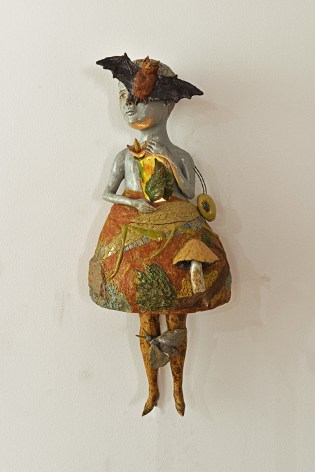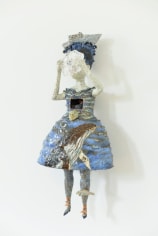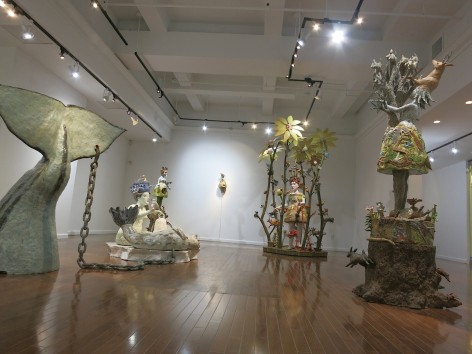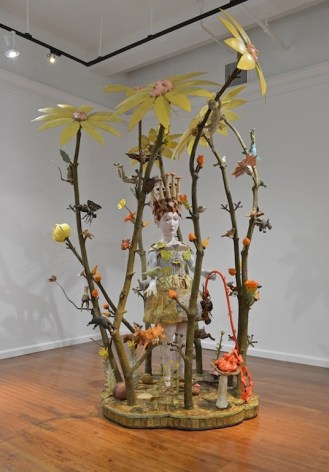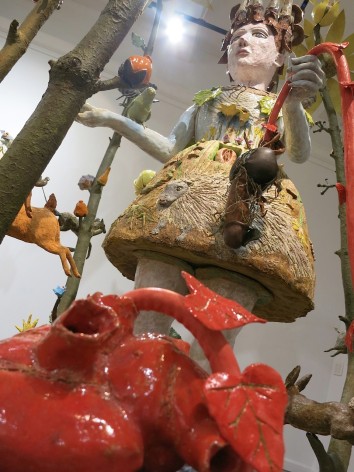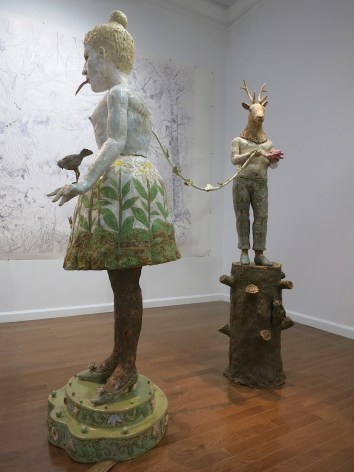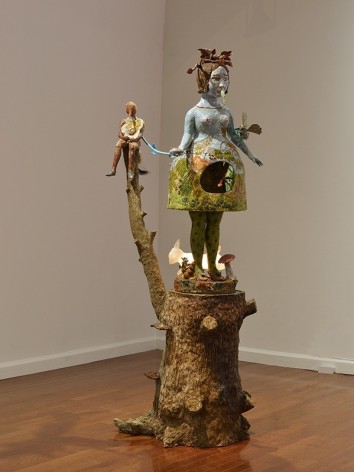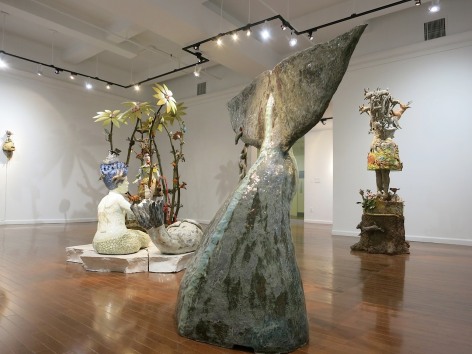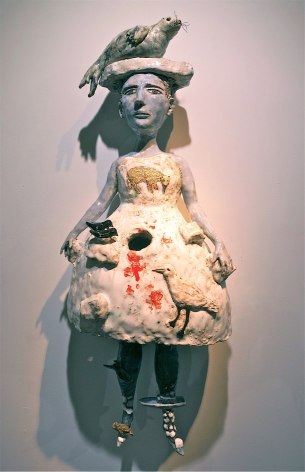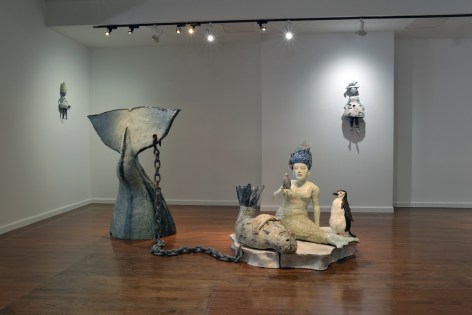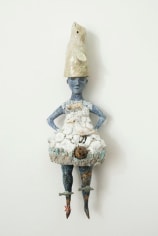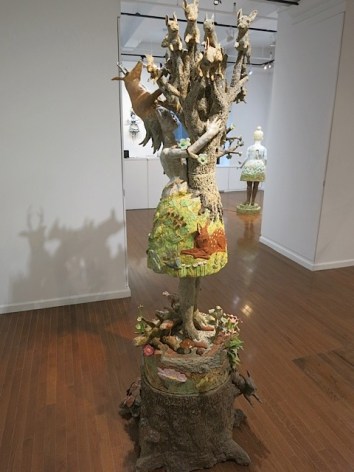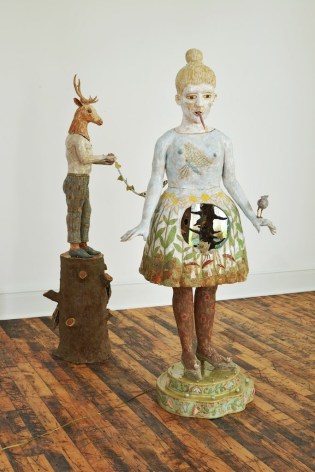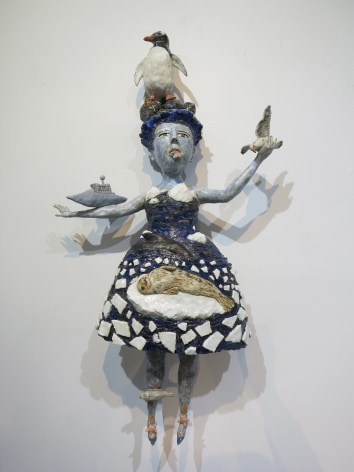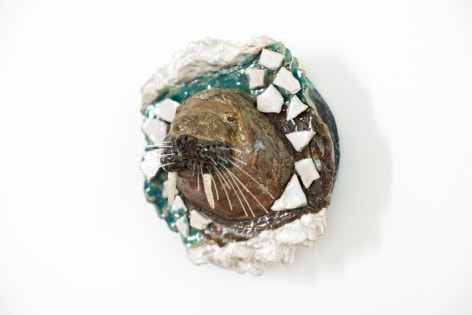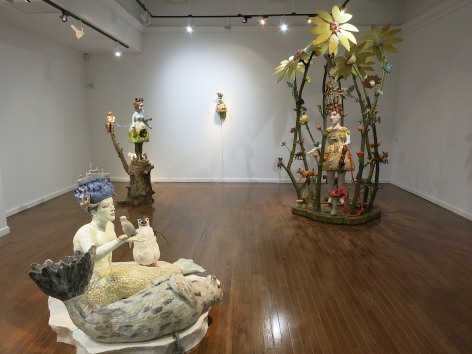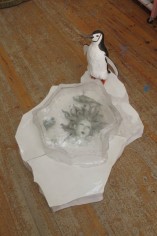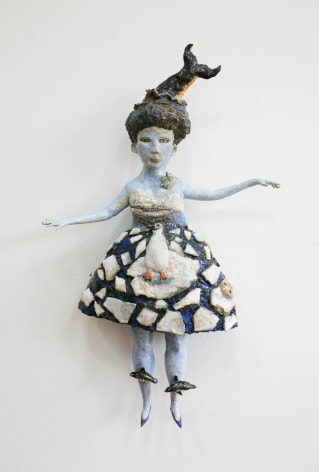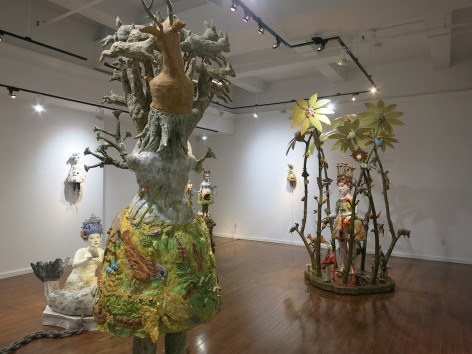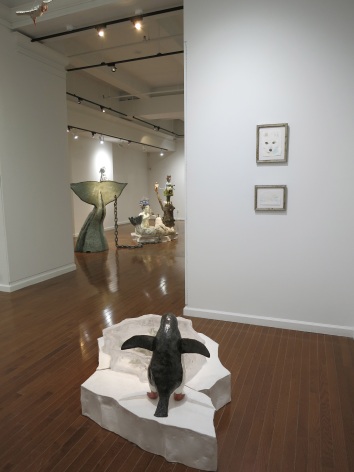Stux Gallery is proud to present their third solo exhibition of sculptures and works on paper by Kathy Ruttenberg produced in less than three years. At mid-career, Ruttenberg is possibly the foremost sculptor working in ceramic today, bringing clay to incredible forms of life, both physical and emotional, forever frozen in their most intensely heated state. In their complexity and scale her recent works are tours-de-force, not merely of manual artistry, but Baroque nature poetry in the spirit of the most fantastical sculptures by Cellini, Palissy or even Bernini. Indeed, according to Roberta Smithʼs New York Times review of Ruttenbergʼs May 2013 show, the artist is “a force to contend with as a narrator and symbolist”. The vibrant folk art overtones in her works aside, they resonate as much with those by Symbolist masters like Redon, Gauguin and Rousseau, as they do with such contemporary fantasy artists as Kiki Smith, Jeff Koons and Robert Gober.
Her most recent works take inspiration from trips this year to the North and South Poles. Ruttenberg encased the detached head of a Medusa-like woman in a block of ice, on the surface of which is a little heart, both observed hungrily by a nearby penguin. The more monumental Ice Age features a reclining mermaid like some ancient river goddess, holding a baby seal as an emblem. Crowned with a ship and tattooed on her back with a krill as the symbol of the food chain and the chain of life, the mermaid presides peacefully over a Weddell seal on its back and a Chinstrap penguin, predator and prey, while the exuberant tail of a diving whale is quite literally caught in a diorama-like allegory of shared environmental destiny.The most complex work in Fired Ice is The Nature of the Beast, which Ruttenberg had intended as the centerpiece for her previous Stux show but was unable to complete until now. Enshrined like some archetypal cult idol in a circular temple with flowering trees for columns, a young woman exposes her vulva even as she wears richly illustrated garments showing woodland animals cavorting with a tiny blonde girl. Referencing the magical interconnections between inner and outer worlds, Ruttenbergʼs latest works again include elaborate miniature paintings and sculptures wrapped around or even inside the primary figures, illuminated like psychic revelations. To experience this skirt painting entirely a viewer must go all around the fantastical grove as if on a carrousel, encountering in turn the little ceramic figures attached to each tree. The central idol also wears a crown of phallic mushrooms that imprison a rat, and as if under the ratʼs spell, she holds an arterial tube from one end of which dangles an uprooted penis and from the other end a heart, the essential remains of a love she cannot let go.
Backgrounding all the sculptures is a print based on a gigantic drawing of a forest interior with branches reaching every which way and scores of animals converging in some shared refuge – elephants, bats, squirrels, leopards and many more. Some of these creatures are only faintly outlined while others are more densely shaded to stand out, with the result that overall the drawing pulses with haunting nature energies. Developing from work to work, Ruttenberg strives for nothing less than the richest imaginable graphic, plastic and metaphorical language.
-‐Charles Stuckey

